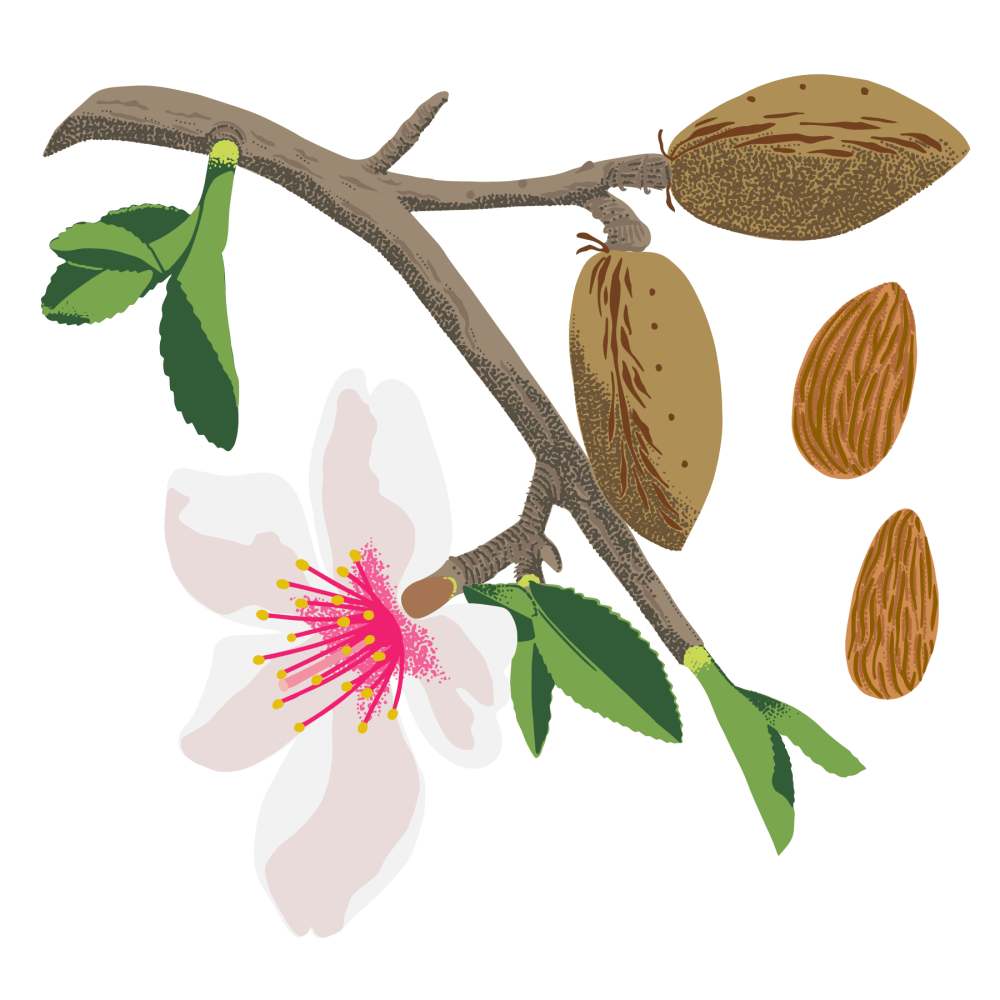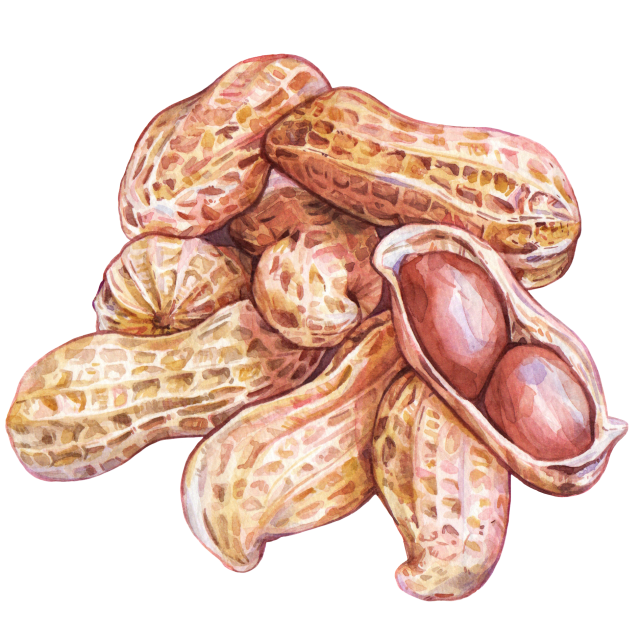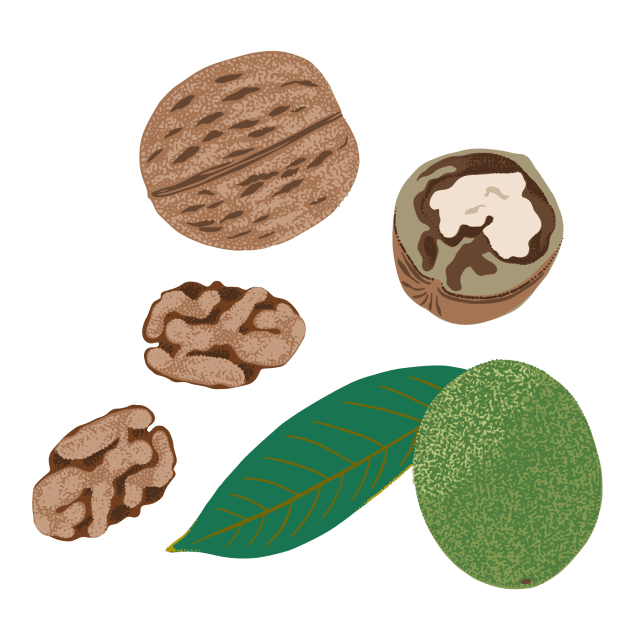Almond

Latin name: Prunus dulcis
Uses: nuts, butters, meal (flour), milk, oil, flavorings
What are almonds?
Almonds are tree nuts, making them one of the most nutrient-dense foods on the planet. These delicious nutritional powerhouses are incredibly good for you, and they’re an essential ingredient in cuisines from Europe to South Asia and beyond. Almonds are related to peaches and other stone fruits, which makes perfect sense if you’ve ever seen them on the tree — they look like tiny green peaches with large pits. Almond trees were possibly the first ever domesticated by humans, starting around 12,000 years ago.
Why are almonds healthy?
Almonds combine healthy fats, dietary fiber, and antioxidants in one tasty bite: a complete macronutrient profile in a highly portable snack. Their many benefits may include enhanced brain function, heart disease prevention, reduced inflammation, bone health maintenance, improved digestion, and diabetes management. To increase the nutrient content even more, try soaking raw almonds in water overnight, which begins the sprouting process.
What do almonds taste like?
Almonds have a warm, spicy top note and a sweet creaminess when raw that changes to toasty-brown nuttiness when they’re roasted. The primary component of almond’s signature smell is the organic compound benzaldehyde, which is also used to flavor almond extract and maraschino cherries.
How do I use almonds?
Almonds have hundreds of sweet and savory uses. Besides being eaten raw as a snack or in trail mix, they add texture and nutrition to all sorts of salads, and are an excellent way for vegetarians to boost protein and healthy fats in their diet. Almonds shine when chopped and cooked with rice, or when blended into thick, creamy sauces. They’re an integral ingredient in Middle Eastern and Central Asian pilafs, and are central to Mughlai curries and any dish labeled “amandine.”
They can also be soaked and blended to make almond milk, and feature prominently in a great many desserts. You’d be hard-pressed to find a European pastry that doesn’t have some kind of almond in it; macarons, Bostock, marzipan, biscotti, and amaretti all place almonds on their rightful pedestal. Almonds go especially well with chocolate, and candied almonds are a traditional wedding favor meant to symbolize a sweet future for the marriage.
What do almonds pair well with?
Mix chopped or slivered almonds and brown butter sauce with green beans, asparagus, or pasta (though you’ll typically see trout or chicken amandine on menus). Add sliced, toasted almonds to a salad to give a bit extra protein and crunch, and almond extract amplifies the cherry flavor in anything with cherries (which share the same Prunus genus). Orgeat syrup lends a certain panache to tiki cocktails that you can’t get from pineapple juice and rum alone.
Where do almonds grow?
Almonds are native to Iran but spread via human trade and migration throughout the Middle East, North Africa, the Mediterranean, and the Levant. Today, world production is mainly in the Central Valley of California. The pollination of California’s almond orchards is the largest annual human-managed pollination event in the world.
How to buy almonds:
The more processed almonds are, the faster they’ll get stale or even rancid. Almonds in their shells have the longest shelf life, though you’ll need a nutcracker to get them out. If their papery brown skin is intact, they’ll last a year or so. Peeled almonds can stay fresh for a couple of months (longer in the fridge), and slivered almonds go bad the fastest. If you’re buying them in bulk, take a little nibble to see if there are any off flavors before you buy.
Fun almond fact:
The progenitors of today’s almond were bitter and toxic due to amygdalin, also found in peach and apricot kernels, a compound that converts to cyanide when eaten. Sweet almonds — the only ones we cultivate for eating — produce very little of this compound.







